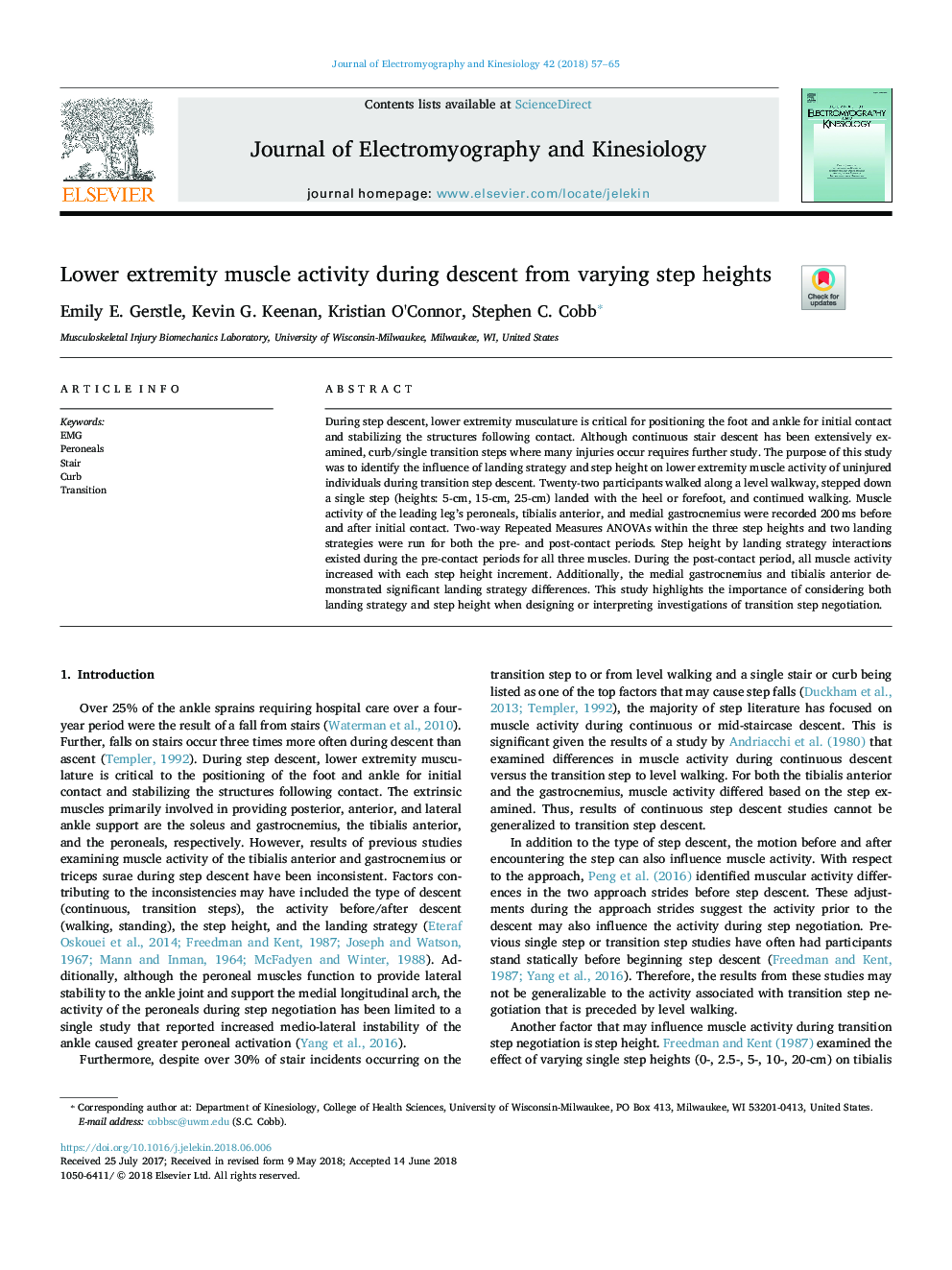| کد مقاله | کد نشریه | سال انتشار | مقاله انگلیسی | نسخه تمام متن |
|---|---|---|---|---|
| 8799744 | 1604171 | 2018 | 9 صفحه PDF | دانلود رایگان |
عنوان انگلیسی مقاله ISI
Lower extremity muscle activity during descent from varying step heights
ترجمه فارسی عنوان
فعالیت عضلانی اندام پایین در طول فرود از ارتفاع گام های مختلف
دانلود مقاله + سفارش ترجمه
دانلود مقاله ISI انگلیسی
رایگان برای ایرانیان
موضوعات مرتبط
علوم پزشکی و سلامت
پزشکی و دندانپزشکی
ارتوپدی، پزشکی ورزشی و توانبخشی
چکیده انگلیسی
During step descent, lower extremity musculature is critical for positioning the foot and ankle for initial contact and stabilizing the structures following contact. Although continuous stair descent has been extensively examined, curb/single transition steps where many injuries occur requires further study. The purpose of this study was to identify the influence of landing strategy and step height on lower extremity muscle activity of uninjured individuals during transition step descent. Twenty-two participants walked along a level walkway, stepped down a single step (heights: 5-cm, 15-cm, 25-cm) landed with the heel or forefoot, and continued walking. Muscle activity of the leading leg's peroneals, tibialis anterior, and medial gastrocnemius were recorded 200â¯ms before and after initial contact. Two-way Repeated Measures ANOVAs within the three step heights and two landing strategies were run for both the pre- and post-contact periods. Step height by landing strategy interactions existed during the pre-contact periods for all three muscles. During the post-contact period, all muscle activity increased with each step height increment. Additionally, the medial gastrocnemius and tibialis anterior demonstrated significant landing strategy differences. This study highlights the importance of considering both landing strategy and step height when designing or interpreting investigations of transition step negotiation.
ناشر
Database: Elsevier - ScienceDirect (ساینس دایرکت)
Journal: Journal of Electromyography and Kinesiology - Volume 42, October 2018, Pages 57-65
Journal: Journal of Electromyography and Kinesiology - Volume 42, October 2018, Pages 57-65
نویسندگان
Emily E. Gerstle, Kevin G. Keenan, Kristian O'Connor, Stephen C. Cobb,
